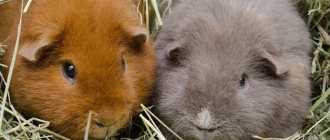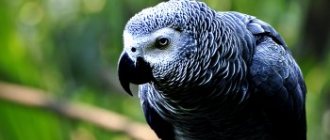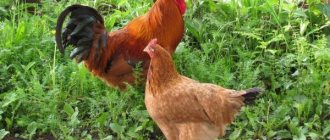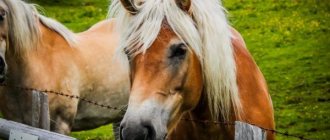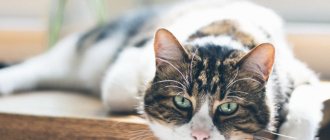Despite the unusual appearance and peculiarities of care, the life expectancy of the sphinx differs little from its relatives. These creatures live from 9 to 15 years, on average up to 12, but there are rare cases when a cat has lived to be twenty years old. If the animal is a full member of the family, it is important for the owner to familiarize himself with the rules that will help prolong the life of his beloved pet.
The longest life expectancy of this breed is 30 years.
Contents in the house
Sphinxes are simply an ideal choice for people who do not like coolness and suffer from low temperatures. Frozen cats, taking a cat in their arms, pressing it to their body, feel a surge of warmth. In vain it seems that the pet suffers from high body temperature in sphinxes; this is their normal state, which can reach up to 38-39 degrees, and in kittens sometimes reaches up to 42. The sphinx can become a good heating pad for the owner. The cat family is warm-blooded, but in hairless sphinxes, this is more pronounced due to the almost complete absence of hair.
The appearance of the sphinx with large ears, with a body on slender long legs, almost devoid of hair, makes it look like mysterious aliens. Caring for them and keeping them is much more complicated, unlike other fluffy cats. Is as follows:
- special care is needed for human-like skin with a tendency to sunbathe and sweat;
- it is necessary to maintain a comfortable temperature and humidity in the house;
- attention is required for the short “suede” fur, which is covered with folds of skin;
- the skin requires regular water treatments, washing and bathing;
- when sweating occurs, wipe the body with a damp soft cloth or napkins;
- due to the lack of eyelashes, it is necessary to clean the eyes of mucus daily;
- huge ears need cleaning due to sulfur discharge from the shells;
- sharp claws are trimmed regularly;
- In winter, prepare a warm shelter for sleeping and clothes for walking.
Sphinxes also love attention, it is important for them to communicate with members of the household, they love games and conversations.
Train to the tray
To accustom a Sphynx kitten to the litter box, you must not only choose the right container, but also place it in a secluded, quiet place, away from food bowls. To find a suitable filler for him, you can take, as a sample, a small portion of granules from the breeder with the smell familiar to the kitten.
If the kitten has not started to go to the litter box on its own, then it needs to be weaned from shitting in the wrong place; to do this, they wait for the beginning of the process and take the poor fellow to the litter box to continue the toilet. This way he will understand that he needs to go to the right place. This is usually done when the baby has eaten or after sleep. The tray must be cleaned regularly. The area in the apartment soiled with feces is well disinfected with products that do not contain chlorine.
Important! You cannot punish the kitten, scream, poke your nose, the baby will get scared and will not soon understand what is required of him. Only with patience and affection can you accustom your pet to the tray.
Key facts
The abbreviated name of the breed is Donchak. Bald animals got their name thanks to their homeland - Rostov-on-Don.
The life expectancy of the Don Sphynx is 12-15 years. Representatives of this breed have poor health, but there have been cases when pets lived up to 30 years. The main disadvantage of Donchak is its vulnerability to low temperatures. The poor thing is constantly freezing and practically never leaves his owner’s hands. Due to the lack of fur, heat immediately spreads throughout the body, so the Don cat seems very hot.
Despite the slightly alien and slightly arrogant appearance, the main characteristics of the Don Sphynx breed are good nature and peacefulness. In their character, these pets are in many ways reminiscent of dogs: they also painfully endure the loss of their beloved owner.
The description of the Don Sphinx is a bit reminiscent of the Canadian one. Their main difference is the gene responsible for the lack of hair. Among Canadians it is recessive, which greatly interferes with their breeding, but among Donetsk it is dominant.
Healthy lifestyle
Caring for and maintaining sphinxes in the house is a great joy, but also a certain hassle. Like all of the cat family, the life of the hairless breed is short-lived, and how long Sphynx cats live largely depends on many conditions to ensure a happy and healthy life in the house, which can increase the life expectancy of hairless animals.
The following factors influence life expectancy:
Normal weight
Sphynx cats are prone to overeating, so you need to keep your pet's food intake under control. If cats are not restricted in their diet, they will become obese, which leads to health problems.
Movement
So that the pet can avoid gaining excess weight and to ensure energy expenditure, a playground is installed for it and they are provided with outdoor games. This will keep your pet in good physical shape.
Cleanliness and hygiene
Maintaining cleanliness is due to the fact that specific fat is secreted on the naked body, in the folds. Germs multiply on the skin if you do not bathe daily or when you wipe it coldly. Regularly wipe eyes and ears to remove discharge.
Body temperature
Hairless Sphynx cats do not have fur that can protect them from freezing. Changes in temperature make them catch cold easily. Therefore, they buy warm clothes for the winter and equip them with a cozy, warm place to sleep.
Tan
Hairless cats get burns after prolonged exposure to the sun. Therefore, they provide protective capes and protect them from direct midday rays.
Curiosity and Curiosity
Light, agile sphinxes are not only inquisitive, but also curious; in order to protect against injury, they remove dangerous objects away.
Loneliness
Sphynxes do not like to be alone; they get very bored when their owner is absent for a long time, so it is recommended to keep them in pairs or with another animal.
Heredity, diseases
The presence of long-lived grandparents gives a chance that the pet will not have congenital defects or diseases. It is very important to maintain good immunity by providing your pet with a nutritious diet.
Sterilization, castration
How long a Sphynx cat lives depends on the fact that if the owners do not plan to have offspring, then after sterilization, her hormonal processes are regulated, diseases of the reproductive system do not occur, diseases of the mammary glands do not appear, and her lifespan increases.
If the above conditions are met, the period of a happy and healthy life of sphinxes is extended, on average it is 9-12 years, but can reach up to 15 years.
Raising a pet
A four-legged friend must have a scratching post so that he doesn’t ruin your furniture.
Four-legged friends can be vulnerable. They need to be raised without scolding or pressure, otherwise the animal may become offended. Sphynx cats may have trouble getting used to the litter box. When training your cat to use the litter box, you need to be patient.
Spray the areas where your pet goes to the toilet with water and lemon juice or citrus-scented essential oil. The aroma will scare away your pet and help prevent the animal from repeating the trick.
At an early age, Don Sphynxes love to sharpen their claws and also often scratch. Therefore, it is worth purchasing a sharpener in advance, as well as a sufficient number of toys. Then the owner will be able to keep the furniture intact. In addition, if a small kitten is busy with an item purchased for it, it will not attack the hands and feet of the residents of the house. For very active tailed animals, it is worth purchasing a special play complex. In order for the animal to quickly learn the rules in the house, it is necessary to give it enough attention.
Sphinx food
Sphynx cats have a natural tendency to overeat, so high-quality, balanced nutrition guarantees your pet's good health and development.
The exotic breed of Sphynx needs a high-quality diet and a strict regime. What to feed the Sphynx in order to ensure activity and maintain a comfortable body temperature, the pet needs food containing more calories. The diet depends on the type of food chosen:
- Ready-made factory food is balanced in its content of vitamins and minerals.
- Natural homemade food is of higher quality, but requires a special set of products to provide the Sphynx with all the necessary components for proper nutrition and development.
Diet for a kitten
At 3 months of age, for a kitten moving to live in the owner’s house, they choose the type of food: natural food or ready-made specialized factory food for kittens. The new food should correspond to the previous usual diet in the first weeks, new components are gradually added, so the Sphynx’s body will painlessly switch to a new food for it, which will be completely absorbed.
For busy owners, deciding what to feed a Sphynx kitten is simple. It is convenient to organize your pet’s meals using ready-made kits. Many companies have proven their products to be of high quality, for example, manufacturers of the Royal Canin brand. With such a diet, the Sphynx needs large amounts of water with round-the-clock access.
Starting from 3 months, the little sphinx’s diet and nutritional requirements are gradually replenished with meat, dairy products, and cottage cheese. Add vegetables and herbs.
The meat is given raw, frozen, and rolled into minced meat. Meat products include beef, all types of lean game, and offal.
All types of porridges from different cereals, finely chopped boiled or raw vegetables and herbs are added to the minced meat. When choosing vegetables, they look closely at the kitten’s preferences; some do not eat beets, while others do not eat cabbage.
Important! Deep freezing of meat products kills all pathogenic microbes and helminths.
At 3 months, the serving size of a Sphynx kitten is approximately 25 grams with feeding 7-8 times a day. Gradually, at 4-6 months, portions are increased to an average of 50 grams and feeding is reduced first to 5-6, and then to 3 times a day. Provide free access to fresh, bottled water, which is changed daily.
Important! Scheduled feeding is convenient not only for the owner; you can control the amount of food the kitten eats and plan your time. It is useful for the Sphinx to eat on time; the stomach adapts to digestion, which reduces the risk of overeating.
Diet for an adult
For sphinxes, both natural and ready-made food are useful. Factory kits have a balanced composition and are supplied with the necessary substances and vitamins. For hairless cats and any cats of other breeds, natural food is preferable and tastier, but the owner needs to monitor its components, including the vitamins and minerals the animal needs for development and replenishment of the energy balance.
Table No. 1 : composition and nutritional standards for an adult Sphynx
Porridges and vegetables are given mixed with meat and vegetables with the addition of vitamins, and you can add greens.
Ready-made feed
For owners who do not have the time and opportunity to feed their pet prepared natural food at home, ready-made food can help in this case.
There are many companies on the market that produce products for cats. One of the oldest, the French company ROYAL CANIN, has been producing products for animals, including the Sphynx breed, for more than 50 years. Since 1968, the company has been developing high-quality premium products for nutrition and maintaining the health of cats from birth to old age.
Table No. 2 : Royal Canin food line for sphinxes
Advice! To strengthen bones and maintain your pet’s nervous system, it is useful to add 1 drop of vitamin D to food daily.
Sphynx weight by month
For the Sphynx, from birth it is necessary to balance the diet, avoid overeating and monitor the normal weight.
By the year, the average, one-year-old weight of a sphinx is from 2.5-3 kg, and for a cat up to 4-4.5 kg, they try to stick to it in the future.
Important! To correctly calculate the amount of food, take approximately 5% of the pet’s body weight and then adjust this volume.
Kittens are separated from their mother's diet after 3 months and transferred to 4-6 meals a day with basic food. To properly monitor the development of a kitten, the owner is recommended to weigh the pet by month to one year.
Table No. 3 : Average weight of the Sphinx by month.
Appearance
Using the breed standard, you can study the description of the Don Sphynx. This is a harmoniously built animal with strong bones and bare, folded skin. Its appearance strongly resembles cats, whose images were found in Egyptian tombs. That's why they were called sphinxes.
Varieties
There are several varieties of Donchak, depending on the characteristics of the coat. Both complete absence of hair and the presence of short hairs are allowed. This depends on the conditions of detention, the functioning of the animal’s hormonal system, and the time of year.
- The most common are hairless sphinxes. Their peculiarity is the complete absence of hair. The skin is smooth like rubber, most often dry and smooth, covered with many folds. Sometimes velvety to the touch due to thick, short hairs - up to 1 mm. When such animals are crossed with each other, the offspring are born with genetic abnormalities and poor health.
- The Velor Sphynx is born with short hair, smooth and soft. By the age of 2, it partially falls out, remaining on the paws and tail. There are light velor, when the entire body is covered with short, up to 2 mm hairs, and downy. In this case, the fur on the paws, chest and tail is longer and softer. Donchaks of the velor-point variety have hair only on the paws and muzzle, its length is up to 4 mm.
- The brush variety has longer hair - up to 5 mm, and is stiff, like bristles. May be frizzy. Typically, kittens are born normal, with thick fur. By the age of 2, it thins out, the back, sides and neck often become bald. The fur on the paws, tail and muzzle is thicker. Donchaks are distinguished between brush velor, brush point and dense brush. In the latter case, the fur completely covers the body, the skin underneath is not visible.
Please note: Representatives of the breed with hair are not recognized by the standard and are not allowed to show. But they are used for breeding. Crossing hairless cats with such individuals reduces the risk of congenital pathologies in the offspring.
Standard
According to the standard, Donchaks are medium-sized cats. Height is 25-30 cm. Adult animals weigh on average 4-6 kg. Sterilized individuals may gain weight.
- The body is elongated, muscular, harmoniously built. The shoulders are narrow, the chest protrudes, the croup is wider. Because of this, the body shape is pear-shaped. Males are larger than cats, their weight can reach 7 kg, and their height is 30 cm. The posture of cats is graceful.
- The body is covered with folds. There are especially many of them on the head, neck, paws, under the arms, and in the groin. The skin is elastic, pleasant to the touch - smooth and warm, it even seems hot.
- The limbs are proportional to the body, slender. The pads are oblong, the fingers are long, connected by membranes.
- The tail is thin, flexible, straight and long, tapering towards the tip. Usually hairless, but in some varieties it is covered with short, dense hair.
- The head is wedge-shaped, triangular when viewed from above. Set on a thin, short neck. The cheekbones are clearly defined, the brow ridges are clearly defined, and the bridge of the nose is straight. The forehead is narrow, straight, covered with wrinkles. The nose is wide and dark. The mustache is small, thick, and may be completely absent or curly.
- The ears are very large in relation to the head, rounded at the tips. Set high and wide, facing forward.
- The eyes are large, slanted, almond-shaped, there are no eyelashes. Can be any color. The look is intelligent, hypnotic.
- Don Chaks have different colors, depending on the color of their skin. You can choose a black, gray, red, white kitten. Don Chaks look unusual in blue, cream, reddish-pink, tortoiseshell or particolor. Individuals of lilac and chocolate color are rarely found.
Deviations from the standard
There are several disadvantages due to which a cat may not be allowed to be exhibited or bred:
- eyes are round or small;
- turning of the eyelids;
- malocclusion;
- the head is round or too narrow;
- the body is completely covered with hair;
- short or thick tail;
- ears are small or low set;
- the body is shortened, with thin bones.
How is it different from the Canadian Sphynx?
Among cat lovers, the best known breed is the Canadian Sphynx, which appeared in Canada in the mid-20th century. These breeds have different genetics; the Donetsk breed has a dominant gene for hairlessness. Canadians are not completely bald; some of their offspring have fur.
Don Sphynxes have better health and are easier to breed. Another difference is the wedge-shaped head and thin, clearly defined features. Representatives of these breeds cannot be crossed.
Sphynx care
Maintaining hygiene and caring for the Sphynx requires great attention; they do not have a protective coat, and their eyelids do not have eyelashes.
- Monitor the condition of the skin and keep it clean. Constant sweating, many sebaceous glands secreting fatty secretions cover the body with a dirty film and smell bad. To keep the skin clean and healthy, your pet is often bathed and wiped with wet wipes.
- Dust and dirt accumulate in the large form of the ears, which leads to dark waxy discharge. Care and maintenance of the Sphynx ears consists of removing mucus using swabs and cotton swabs.
- In the evening, discharge accumulates on the mucous membrane of the eyes, unprotected by eyelashes; they are transparent, similar to tears, and must be regularly removed with wet wipes. Dark, purulent accumulations in the corners indicate infection. In this case, immediately seek advice from a veterinarian.
Skin care
The skin of hairless cats resembles human skin and requires constant care for sphinxes, which includes the following hygiene procedures:
- Bathing, more often 2-3 times a month.
- Wiping with a damp cloth or napkins.
- Moisturizing will help regular baby cream to peel off and even peel off.
Washing and bathing
Hairless cats often sweat, so you need to know how to wash your Sphynx. The opinion about daily bathing is not entirely true. How often to bathe the Sphynx will be determined by the condition of the skin and the degree of its obesity.
You can navigate by the following signs:
- unpleasant pungent odor;
- unpleasant stickiness of the skin;
- fatty grayish dirty coating;
- accumulation of dirt in the folds of the skin;
All these signals will answer the question of how often to bathe the Sphynx, that it is time to bring the pet’s skin back to normal, to give the skin a clean suede look that is pleasant to the touch.
How to bathe a Sphynx kitten and when, many breeders recommend starting no earlier than 3-4 months of age. For kids, there is a risk of catching a cold and getting stressed from water procedures. While they live with their mother cat, she takes good care of hygiene and constantly licks them until they shine.
You should not frequently bathe a bald pet for more than 2-6 weeks, regardless of the degree of skin contamination, for the following reasons:
- Sphynxes are warm-blooded creatures and have a high body temperature, and after swimming they become hypothermic.
- Even specially selected shampoos and water damage the function of the sebaceous glands, which protects against external irritations and infections.
If absolutely necessary, if a hairless cat has soiled part of its body, it is wiped with a damp sanitary napkin with a neutral composition and odor, as for small children.
Before starting a bath, you need to prepare bath accessories and the sphinx itself, especially before the first bath in its life.
For swimming you will need:
- a large basin, in the bathroom for many it is inconvenient to wash a nimble, soapy pet;
- container with water for rinsing, the water temperature remains within 37-39 degrees.
- acquire a soft, delicate sponge, as for bathing a child;
- sanitary napkins will be needed to wipe the face;
- prepare 2-3 towels for wiping a wet pet dry;
- When swimming, all doors, windows, and vents are closed to prevent drafts.
The procedure for bathing a prepared sphinx consists of the following manipulations:
- cover the bottom of the basin with a towel or silicone mat;
- water is poured into the basin only until the paws are covered;
- calmly place the pet in the basin, gently stroke it;
- after the cat gets used to the water, apply shampoo to the sponge and massage the body;
- carefully remove the shampoo with prepared water until the soap is completely washed off;
- The body is wiped with a towel, and the face, eyes, and ears with a napkin.
When bathing the Sphinx, follow the following recommendations:
- the cat is not fed before bathing; it will tolerate the procedure easier on an empty stomach;
- in order not to scare the cat, it is useful to foam the water before bathing;
- You can wash your cat only 2 weeks after vaccination.
- you cannot bathe the sphinx in a cold room with a temperature below + 28-30 degrees;
- It is difficult and impractical to wash two animals at the same time;
- It is forbidden to bathe a pet if it is unwell.
Shampoo
Special shampoos for bathing and body care are available for sale for Sphynx cats.
Important! It is not allowed to wash the Sphynx with shampoos intended for other breeds of cats or for humans. They have compounds that are not suitable for the skin of hairless cats, which clog pores and cause irritation.
- “Ms.” is recommended especially for sphinxes. Kiss Graceful Sphinx contains biotin, which not only nourishes the skin, but also relieves irritation and itching.
- Shampoo-conditioner “Doctor VIC for hairless cats (Sphynx)” moisturizes the skin, relieves inflammatory irritation and itching. Enriched with keratin and provitamin B5.
- Foam shampoo “Le Artis for hairless cat breeds” . developed taking into account the characteristics of the skin with components that carefully cleanse and moisturize the skin.
Recommendations for using shampoos:
- shampoo is suitable for water with any hardness;
- the animal is well moistened with warm water, within 37-39 degrees;
- a little shampoo is dripped onto a sponge and distributed over the body with massage movements, forming soap foam;
- Allow the skin to loosen for a few minutes and rinse thoroughly with warm water;
- Wipe your body and ears dry with a towel.
Ear cleaning
Dust and dirt accumulate in the large ears of the sphinx, and sulfur is produced in the shells.
It is necessary to wipe the ears once a week with a special solution to remove accumulated discharge with a cotton swab.
Claws (nail trimming)
A special scratching post and a sharpener for the pet’s claws are installed in the house for the sphinx, but this is not enough; the pet’s claws must be trimmed. Naturally active hairless cats can be injured by overgrown claws and damage their delicate bare skin, which can lead to infections and skin diseases.
Life expectancy of a giving birth cat
Puberty occurs in Sphynx girls between six months and 12 months. Experts recommend that the first mating be carried out no earlier than after a year.
To prevent pregnancy and subsequent childbirth from harming the body, this process should be planned no more than 1-2 times a year.
Pregnancy can be harmful to an animal that has reached the age of 7 years, so kittens should not be planned after this period. In general, whether a cat has given birth or not will not affect its life expectancy. The main thing is to comply with all breeding conditions.
Health and diseases
Experts do not classify the Sphynx breed as an animal with poor health. The immunity of born kittens is normal; the Sphynx rarely coughs, but like the entire cat family, they can be susceptible to viral and bacterial infections.
The peculiarities of the breed are caused by the fact that Sphynxes were bred by breeders artificially through inbreeding in order to achieve a unique mutation with smooth, rubber-like, hairless skin with many folds. As a result, a unique breed was developed, but prone to genetic abnormalities that lead to sphinx disease and abnormalities in the development of organs: eyes, skin, mouth and spine.
The main diseases of sphinxes and pathologies:
- skin diseases, fatty sweating caused by bare skin, almost without hair;
- eye diseases and eye abnormalities, the cause is the absence of eyelashes;
- shortened lower jaw in the oral cavity or “carp bite”;
- underdevelopment of the thoracic and lumbar vertebrae, a common congenital disease;
- reduced growth as a consequence of serious defects.
My eyes are watering
Newborn kittens are predisposed to eye diseases caused by inflammatory processes of the cornea, causing conjunctivitis and scleritis. Eyes that are not protected by eyelashes, and sphinxes simply do not have them, are injured, and debris, dust, and dirt get under the eyelids, which cause inflammatory processes:
- Catarrhal conjunctivitis manifests itself as clear discharge in the form of lacrimation. The membranes of the eyes are marked by redness and swelling, the animal feels pain.
- Infectious purulent conjunctivitis with characteristic gray-green discharge.
From birth, kittens' eyes are given special attention, daily examinations are carried out, and they are washed with furatsilin. Specks are removed from under the eyelids and mucus is removed. Do not allow your eyes to water too much.
Attention! If purulent or infectious discharge appears, self-medication is not allowed; you must consult a veterinarian for advice.
Entropion of the eyelids
The most common pathology is entropion of the eyelids in the Sphynx, which manifests itself in kittens from birth. The disease is determined externally; the eyelid bends inwards, which is very disturbing for children; they suffer from continuous conjunctivitis, discharge in the form of tears and possible infectious purulent discharge. The only way to help kittens get rid of entropion is through surgery.
Attention! Surgical interventions are corrective in nature, which does not completely eliminate the pathology, but leads to some improvements.
Lichen
Kittens with weak immune systems and adults are more often at risk when lichen occurs in the Sphynx when interacting with sick animals or when being in an infected environment. <Dermatophyte> (lichen) is a fungal skin disease that is seasonal and often occurs in cats after estrus. It manifests itself in the form of inflamed, shabby lesions, eczematous areas in which the skin itches and peels.
Attention! Ringworm is a serious, contagious disease that will not cure itself. When the first signs appear, treatment is prescribed by a veterinarian.
When a pet is diagnosed with lichen, the doctor prescribes long-term treatment with medications and treatment with antimicrobial agents, with mandatory compliance with all procedures. Infection with lichen can be prevented by timely vaccinations against all infectious diseases, which are given on schedule.
Skin rash
A rash on the skin of the Sphynx can appear in both male and female cats at any age, completely devoid of “rubber” fur. Rashes occur during active puberty, caused by hormonal secretion of sebum.
Acne (acne) due to the hereditary predisposition of the breed is observed:
- on the back along the spine;
- on the face;
- on the surface of the abdomen;
- under the jaw with the neck;
- in the form of black dots on the tail.
Infection of the skin with acne spreads throughout the body of sphinxes with a certain color. Mostly blue, blue-cream and red animals that are completely naked without hair are susceptible to acne. In flocked plants, rash is less common.
For treatment at home, gels and solutions such as “Zinerit”, “Minocycline”, or “Lindamycin” are used. For mild forms of spread, rubbing with salicylic acid and hydrogen peroxide helps. For severe forms of the rash, consult a veterinarian.
Inflammation of the rash as a result of bacterial activity develops both on the surface of the skin and deep in the subcutaneous layer. There are 2 types of acne:
- Comedones on the surface of the skin with a mild inflammatory process.
- Ulovatocystic acne with deep formation of purulent cystic cavities, manifesting itself in the form of fistulas with the formation of scars.
Advice! Avoid keeping your pet in the sun for a long time.
Dermatitis
When the owner adheres to keeping the pet only at home, then dermatitis in the Sphynx has little risk of being detected on the skin. It is possible to become infected with a similar skin disease by bringing secondary infections into the home.
Dermatitis, when it is impossible for cats to scratch the sore spot, may spontaneously disappear without the use of medicinal drugs. In severe cases, it is enough to use Dexafortor, a single infection or Terramycin spray.
brief information
Don Sphynxes are very gentle, heat-loving animals. They are affectionate, sociable and loyal, like dogs. They will follow the owner's heels and wait for an opportunity to jump on his lap. These smart, obedient and inquisitive pets are popular among cat lovers. Their softness and docile nature is unusual for cats. They give a lot of joy and love, get along well with other cats and dogs, and are friendly with strangers.
Because of their original appearance, some people consider Donchak people to be ugly. Not everyone likes his smooth skin without hair, but with a lot of folds. But the muzzle attracts attention with large ears and almond-shaped intelligent eyes. Because of this “unearthly” appearance, the breed has many fans.
Origin story
In 1966, the first kitten of this breed was born in Canada (but at that time no one knew about it). The newborn boy was the only one naked in the entire litter and he was nicknamed Prune. It was his breeding that made it possible to strengthen the hairless genes. However, at that time, breeders had not yet managed to figure out everything about the mechanism of birth of sphinxes. They looked like a new breed, but it was difficult to figure out how to achieve stability in the offspring.
This question has remained relevant for 10 years. Epidermis corrected the situation. That was the name of the hairless cat who lived in Wadena. Soon another cat of a similar species was born there. She ended up in the Z. Stardust nursery. It is from there that this unique breed takes its start.
Considering the history of this breed, it is worth paying special attention to the black and white cat named Bambi. It was found on the streets of Toronto back in the 70s of the last century.
According to eyewitnesses, he was simply beautiful. Bambi's behavior and character traits fully corresponded to his name. However, this cat was a street cat and suffered more than once due to fights. Due to one of these situations, the poor cat lost one eye and lost the ability to reproduce. Bambi was famous, he lived a very long time and became a centenarian. Fans of this animal celebrated his 19th birthday together.
Diagnostics
Self-diagnosis and starting to take anti-allergy medications is the worst solution. Only professional diagnostics in a clinic can accurately determine the cause of the symptoms. The fact is that allergies are often disguised as many other diseases that can be triggered. Allergies can also pose a serious threat to the human body, leading to swelling of the larynx and other consequences.
The main method for diagnosing cat allergies is special medical tests. The patient's blood is taken for analysis to detect immunoglobulin E, as well as skin tests.
Why is it not recommended to self-medicate? There are many cases where the cat did not cause the symptoms, although in a sense the animal played a role, which allowed false conclusions to be drawn. The most common options for establishing an erroneous diagnosis:
- an allergic reaction can be caused by accessories and animal care products (litter, cat shampoo, cat food, etc.);
- cats accustomed to walking outside can carry other allergens on their fur (pollen, mold particles, etc.);
- infection from an animal with other diseases with similar symptoms (chlamydia, scabies mites, etc.).
Should I worry?
Of course, every pet owner who is sincerely attached to his four-legged friend sooner or later asks this question, because the death of a pet for the whole family is a very sad event and everyone wants to know exactly when to be prepared for it.
If there are children in the family, this issue becomes even more acute. For a small child, the death of an animal can be not just a sad incident, it can really seriously hit a fragile psyche and lead to irreparable consequences, so the question of whether to give a child a kitten is quite logical.
In fact, you just need to understand that most health problems in cats arise from poor diet. Most of the diseases that shorten a pet’s life are the result of an unbalanced or simply incorrectly selected diet.
How to choose a kitten
- Don Sphynx kittens are fragile, sickly creatures and often leave this mortal world in infancy. So buying a baby who is under 12 weeks old is a big and unjustified risk.
- Most parents pass on their temperament and character to their offspring, so before adopting a kitten, talk to its dad and mom. What if they are not charming at all, but evil misanthropes?
- Be sure to ask the cattery owner for a veterinary passport for the kitten. The Don Sphynx, which is taken to a new home, must receive a full package of vaccinations.
- Carefully examine every square inch of your potential pet's skin. If peeling or, worse, traces of eczema are found on it, this is a reason to leave the nursery and never return to it.
- Female and male Don Sphynx kittens differ in character. Cats are more independent and curious, and their skin and fur have a stronger odor. Kitties are more affectionate, more enterprising and more inclined to have close contact with their owner.
- The appearance of the young “Donetsk” is not the last selection criterion. When examined, a proper kitten should give the impression of a healthy and neat creature. As much as possible, avoid babies with bloated bellies, signs of diarrhea and pus-filled eyes, as the consequences of poor care in childhood will follow the animal for the rest of its life.
